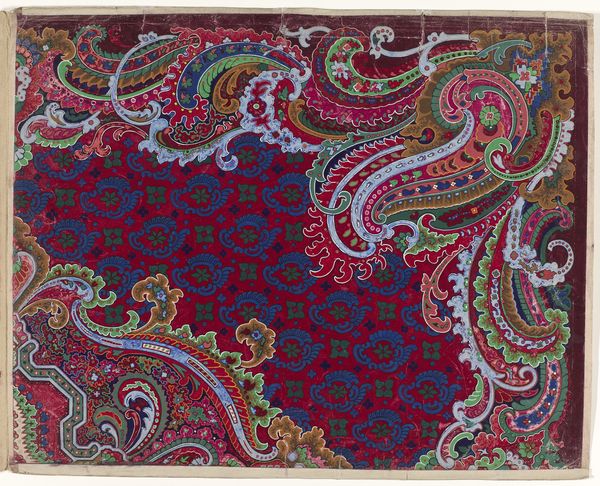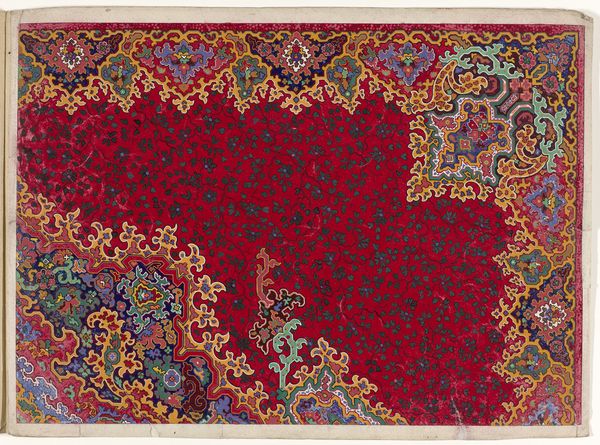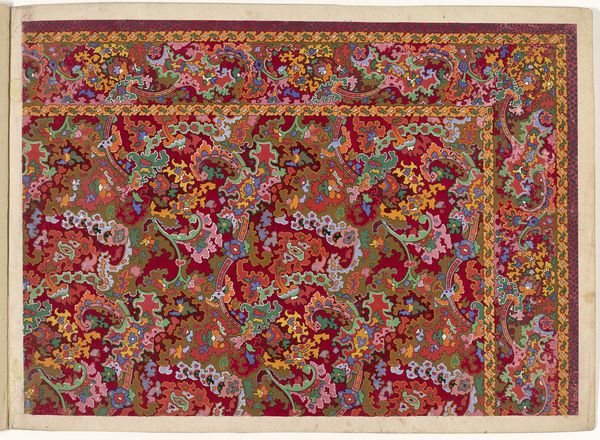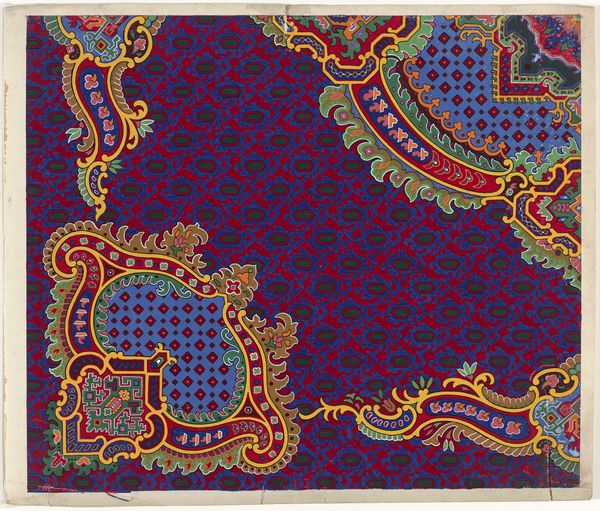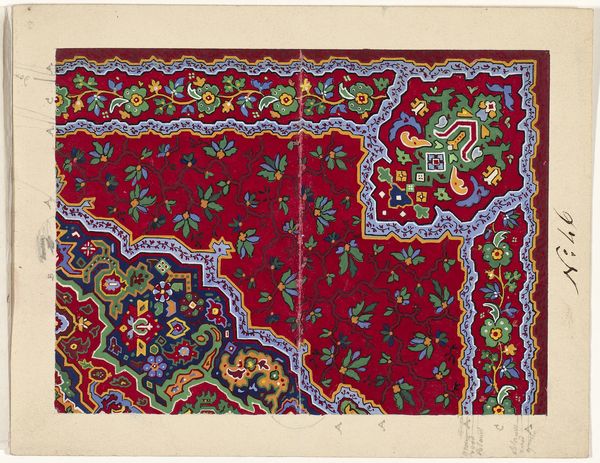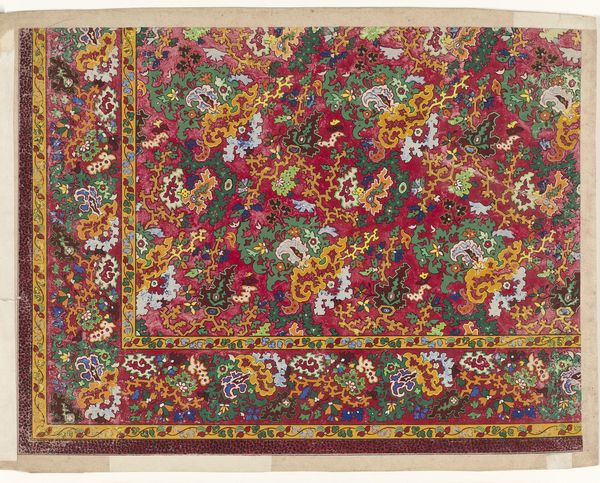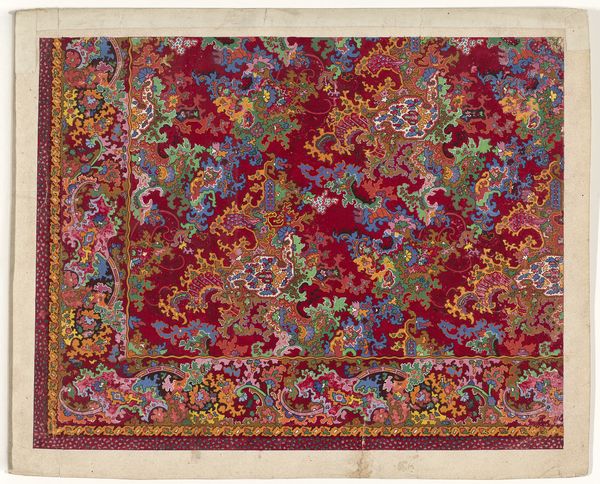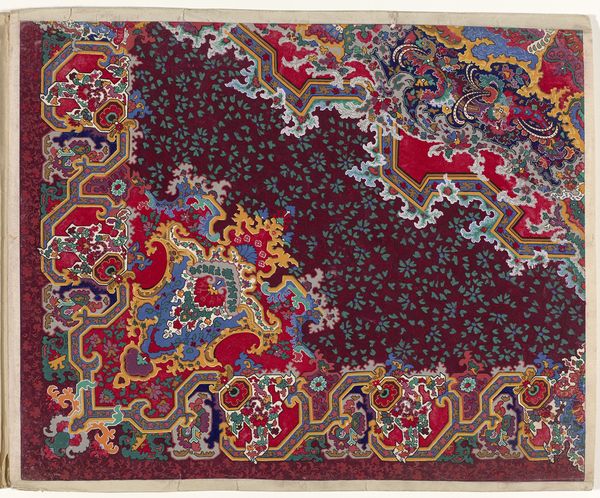
textile
#
organic
#
textile
#
geometric pattern
#
abstract pattern
#
organic pattern
#
flower pattern
#
decorative-art
Dimensions: height 275 mm, width 403 mm
Copyright: Rijks Museum: Open Domain
Curator: This vibrantly colored mixed-media piece is entitled "Ontwerp voor een tapijt," or "Design for a Carpet," believed to have been created anonymously between 1854 and 1864. It's a fascinating study in pattern and the decorative arts. Editor: It's overwhelmingly busy. The sheer density of pattern creates a dizzying effect, though not entirely unpleasant. I wonder about the intent behind it, was it ever realized? Curator: That's the question, isn't it? Being a design, its material manifestation is only theoretical. I'm intrigued by the layering of motifs; floral elements juxtaposed with geometric forms, all within the overarching decorative art framework. Consider the labor involved in creating and potentially realizing this. The cost! Was it to democratize design or for the upper class? Editor: I find my eye constantly drawn to those teardrop shapes—paisleys, aren’t they? They carry such a weight of historical baggage, traveling from Persia, becoming associated with Kashmir shawls, and eventually being mass-produced in Europe. What story were they meant to tell in this particular arrangement? Curator: Precisely! Those paisley shapes, regardless of the material—wool, cotton, perhaps even silk if realized—speak to trade routes, industrialization, and cultural appropriation. It’s not just about the pleasing surface but the means by which that surface came to be. Editor: The choice of color, that deep red dominating the composition, it feels almost regal, though juxtaposed against such fanciful elements. Red traditionally symbolizes passion, sacrifice... perhaps here it is tempered, softened by the intricate detail. Curator: And that detail obscures any deeper symbolic meaning perhaps and serves only as decoration, which is equally telling. I'm interested in the division of labor; was one artisan responsible for the overall design, or was it collaborative? These are questions of artistic intention and the often unseen hands behind the creation. Editor: Looking closer, I appreciate the boldness of the anonymous creator. While dizzying, it’s clear a calculated visual system is working here to guide us across it—revealing its complex layers, not merely hiding them in overwhelming visual noise. Curator: Indeed. Thinking about this from a production standpoint highlights a collision between aesthetic ideals and economic realities of textile manufacturing during that time. It serves as a fascinating entry point into understanding Victorian society and the burgeoning world of global trade. Editor: Yes, seeing beyond the obvious pattern towards those latent social elements has opened new passages of meaning for me. Curator: For me as well. It underlines the intrinsic worth of looking beyond mere symbolism to production, to unlock further social narratives within.
Comments
No comments
Be the first to comment and join the conversation on the ultimate creative platform.
